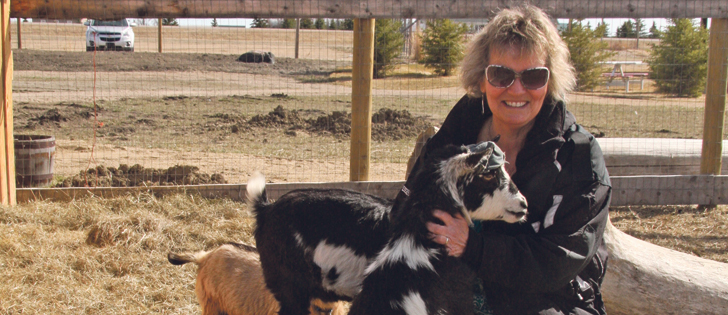Modify and improvise | Rancher explains how to raise goats without spending a lot of money by using what’s on hand
JANSEN, Sask. — Producers who plan to raise goats have to be flexible, says producer Brian Payne.
That means making the best use of the equipment that is available and improvising, said Payne, owner of Caprina Farm & Ranch.
“It’s hard to find goat stuff,” he told a recent tour of his operation near Jansen, Sask.
“I don’t think we need to be rocket scientists or spend a lot of money specifically on goats. A little ingenuity and we can make it all work.”
Read Also

Beef cattle more prone to trace mineral deficiencies
The trace mineral status of our cows and calves is a significant challenge for western Canadian producers and veterinarians.
If the infrastructure at Payne’s farm looks familiar to cattle producers, it’s because it is. From the facilities where he overwinters his animals to the portable water system he uses in the pasture, Payne is, in fact, using a lot of cattle stuff.
The ranch itself is a cattle facility “with pretty simple modifications,” Payne said.
“They (goats) love to get their head stuck.… They will slip through spaces and they will purposefully put their head in places that you didn’t think anybody should think of putting their heads. But there it will be.”
He has added slab fencing in the corrals, which keep bucks from going through. This is particularly critical for producers raising full blood goats and replacement animals.
“When you’re selling seed stock to people, you want to try to do the best job you can to produce for them something that’s going to be better next year than it was last year and on into the future,” he said.
“The goat industry has been held back a little bit because it’s been dominated by the show ring and there hasn’t been anybody that’s consistently performance testing.”
Payne had a few hundred goats in pasture in early September, but many of the animals will overwinter on the farm in familiar three-sided shelters.
He said they work well with some alterations, using curtains and flax bales to create a microclimate.
Payne also uses a custom-built hay feeder, with slanted bars, built from rebar. The device can be adjusted to accommodate round or square bales and the needs of animals of different sizes. It can also be modified for fence-line feeding.
“Does it waste hay? Yes. Do goats waste hay? Yes. The better the quality the hay in there, the less waste there is,” he said.
“You’ll never get any hay feeder or system that’s totally waste free.”
Payne has been grazing his goats this summer alongside cattle at the Wolverine community pasture, where they are contained with the existing fencing.
However, a different situation, with smaller acres or where containment is a concern, could have different requirements to keep animals inside and predators out.
“Not everyone has enough dogs. Some don’t have any,” said Jason Williams of Tru-Test Group, who provided a fencing demonstration for producers touring the Wolverine pasture.
“I’ve always been in the mindset of how can we make your place work a little bit better. If you have something for a fence structure, let’s utilize that and hopefully save you a little money.”
He recommended spending more money on small things, such as insulators for electric fences, and watching for grass near low-lying wires, which are necessary when containing goats.
“I say that even if we have page wire, run a hot wire inside of the page, because old rams are terrible. Sheep are bad. They push and they push on page wire until it’s all caved in,” he said.
“Eventually they loosen it up enough that they can squeeze through it. If you have a hot wire in front of the page, it hurts them every time. They’ll eventually stop trying it.”
Payne said he takes a minimalist approach — “cheap posts and panels” — which allows him to change on the fly if he identifies inefficiencies in the way he’s housing, moving, herding or feeding his animals.
“Everybody here is still on a pioneering mission to commercialize our meat goat business so that we can run 500 or 1,000 nannies easily, cost effectively and efficient from a labour and feed point of view, and we’re not there yet.”















